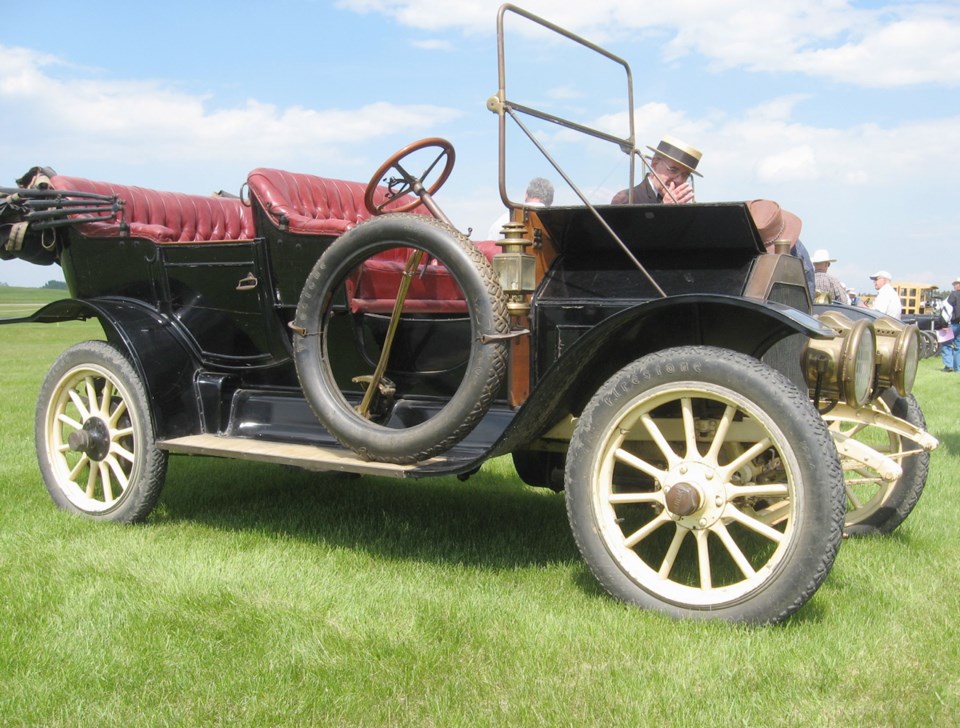When Robert McLaughlin opened his small carriage works in the community of Enniskillen north of Oshawa, Ont., in 1867, he couldn’t have dreamed he was planting the seeds of the great General Motors Co. of sa���ʴ�ý.
When business expanded, Robert moved it to Oshawa in 1878, where McLaughlin Carriage Co.’s finely crafted wagons, carriages and cutters established a reputation for high quality. It became the British Empire’s largest carriage maker, and Robert’s teenage sons, George and Samuel, joined the business.
Although Robert wasn’t enthusiastic about automobiles, when cars began coming on the scene around the turn of the century, he didn’t discourage his son Samuel, who was.
After trying to have their own car designed in the early 1900s, which failed when their American engineer, Arthur Milbrath, became ill, Sam reviewed several makes of American cars. He settled on the Buick with its powerful overhead-valve (then called valve-in-head) engine. He struck a deal with Flint, Michigan, carriage maker William (Billy) Durant to build Buicks in Oshawa.
Durant had recently got control of Flint-based Buick Motor Co. and was in the process of making it successful. McLaughlin entered into a 15-year agreement to purchase Buick running gear from Durant. With McLaughlin’s body expertise and Buick’s sturdy underpinnings, Sam confidently entered the car business.
In 1908, shortly after signing the contract with McLaughlin, Durant incorporated General Motors as a holding company in New Jersey. Its main asset was Buick, but Durant quickly began adding more makes.
Oshawa production started late in 1907 with McLaughlin bodies on Buick running gear. Those first cars, called McLaughlins, were styled by Sam himself, who had a natural artistic flair. He had designed McLaughlin’s carriages and cutters, and Sam’s talent often made Canadian cars more stylish than their American counterparts.
McLaughlin and Durant maintained a long, friendly relationship, and in addition to McLaughlin-Buicks, McLaughlin began building Chevrolets in 1916. The McLaughlin Motor Car Co. prospered, and in 1918, Sam and George decided to sell McLaughlin Motor Co. to General Motors Corp. It became General Motors of sa���ʴ�ý, with Sam as president and a vice-president of General Motors.
McLaughlin produced a variety of models and body styles, including a four-cylinder, light six and standard six until Buick went to its famous overhead-valve, straight-eight engine exclusively in 1931.
McLaughlin went through something of a name identity crisis for its first decade and a half. According to Hugh Durnford and Glenn Baechler’s book Cars of sa���ʴ�ý: “For the next 15 years, there was some confusion about the name of the McLaughlin car. Called simply McLaughlin, it was readily distinguishable from the U.S. Buicks and kept before Canadians the name associated with quality and value.
“However, it was also called and advertised as McLaughlin-Buick. Some models read McLaughlin on the radiator and McLaughlin-Buick on the hub caps.” Through all of this, McLaughlin’s slogan was “sa���ʴ�ý’s Standard Car,” and the McLaughlin-Buick name gradually became standardized.
The ambivalence stemmed from a desire to tap into sa���ʴ�ý’s growing sense of patriotism strongly reinforced by its First World War contribution, particularly in the Battle of France’s Vimy Ridge. They also wanted to capitalize on the American Buick’s excellent reputation.
McLaughlin used a clever variation on Buick’s advertising slogan, “When better automobiles are built, Buick will build them,” by cheekily proclaiming: “Better automobiles are being built, and McLaughlin is building them.” The McLaughlin part of the name ended in 1942.
When steel bodies began supplanting wood and standardizing car design, the carriage-making craft receded. As Canadian styling became locked into the American Buick’s metal stampings, Canadian cars became less distinctive and Sam turned to styling special one-off models.
Among them were the royal tour cars, the first two built in 1927 based on 1928 McLaughlin-Buicks. The large, lavishly appointed tourings accommodated up to seven passengers and were used for the 1928 visit of the Prince of Wales to sa���ʴ�ý.
A second pair of royal cars was built for the visit of the King and Queen in 1939. McLaughlin-Buick sedans were stretched 457 millimetres, reinforced and made into convertibles. There was a speaker between the chauffeur and passengers.
Another royal limousine was the 1936 model built for young King Edward VIII, said to be the car he drove to the dock following his abdication of the throne. He also bought a Buick Roadmaster for his friend Wallace Warfield Simpson, who reportedly used it in her “escape” to Cannes during the abdication crisis. The Royal Family’s preference for Buicks gave them a 1930s sales boost in England.
Sam McLaughlin retired as chairman of the board of GM of sa���ʴ�ý in 1967, but remained honorary chairman until his death in 1972 at the age of 100. Among his legacies was the best-known Canadian car nameplate: McLaughlin-Buick.



